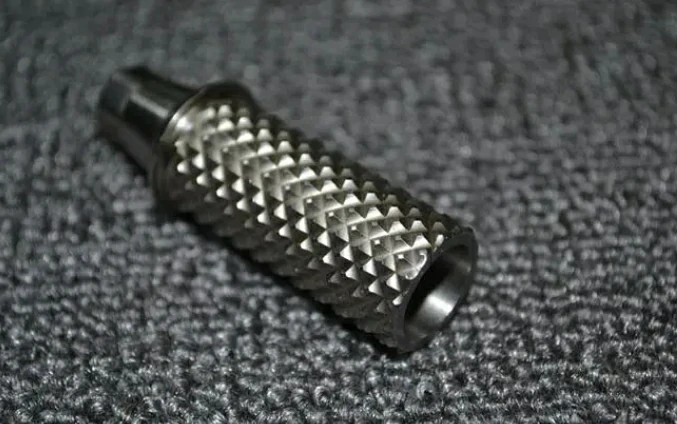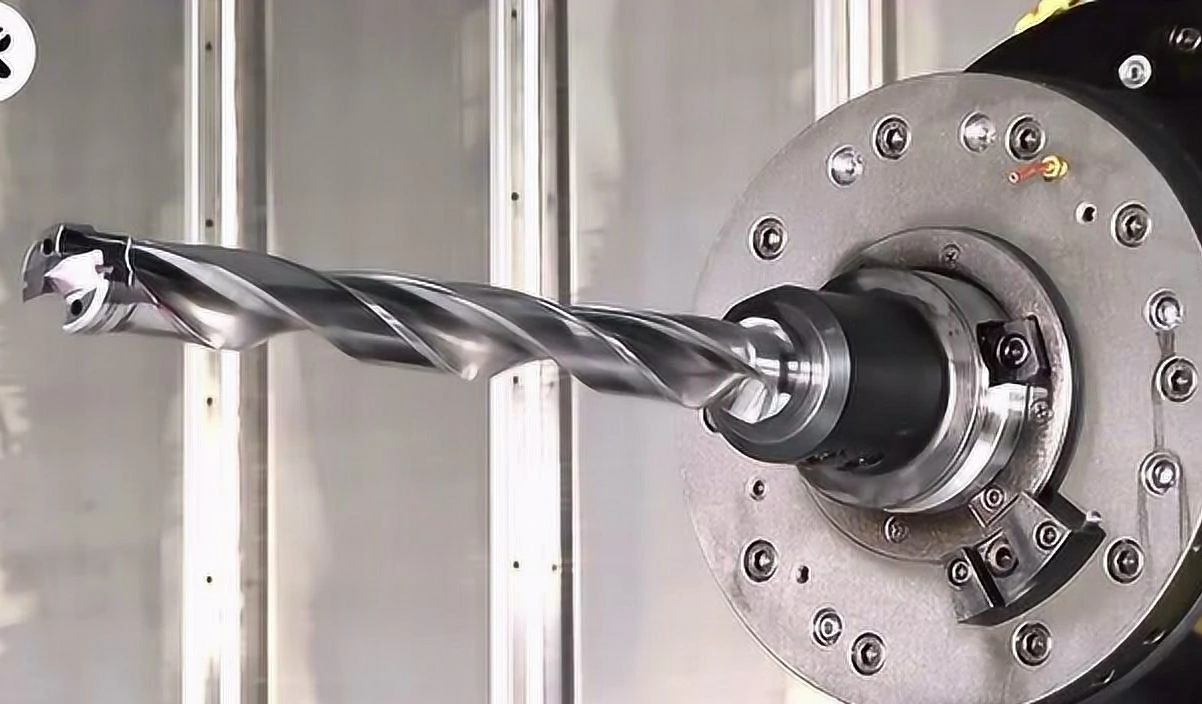A vertical milling machine is an essential tool in the manufacturing industry, used to shape metal and other solid materials. Unlike horizontal milling machines, vertical milling machines have vertically oriented spindles that hold and rotate the cutting tool.
This article delves into the components, working principles, types, applications, and benefits of vertical milling machines.
Vertical Milling Machine Overview
A vertical milling machine, also known as a vertical machining center or CNC vertical milling machine, is a versatile machining tool. Its main feature is a vertically oriented spindle, which can fix and rotate cutting tools, allowing them to work against a stationary workpiece. This design enables the vertical milling machine to move precisely along the X, Y, and Z axes, providing excellent control and accuracy. With this three-dimensional movement capability, the vertical milling machine can efficiently perform various machining operations such as cutting, drilling, milling, and boring, thus processing a wide range of materials.

Many vertical milling machines also have a rotating turret, which houses a stationary spindle (rotating cutting tool), while the turret (which is movable) performs milling operations on the workpiece material in both vertical and horizontal directions. They are generally used for refining small geometric shapes.
Vertical Milling Machine Composition
A vertical milling machine consists primarily of a base, column, spindle head, worktable, and control system. The base provides stability and support for the entire machine. The column houses the spindle head, which holds the milling cutter and drives it in rotation. The worktable is mounted on a horizontal plane and can be adjusted in multiple directions to position the workpiece accurately. The control system, typically a computer numerical control (CNC) unit, oversees the movement of the spindle and worktable, ensuring precise cuts.

Vertical Milling Machine Working Principle
The working principle of a vertical milling machine is based on the rotation of the milling cutter and the corresponding movement of the worktable. The cutter is mounted on the spindle head and rotates at high speeds, generating the cutting force. Meanwhile, the worktable, holding the workpiece, moves in a controlled manner beneath the cutter, exposing fresh surfaces of the material for removal.
During the milling process, the spindle head can be adjusted to change the angle of the cutter relative to the workpiece, enabling the machine to create complex shapes and contours. The worktable can also be tilted or rotated to further enhance the machine’s versatility.
Types of Vertical Milling Machines
Vertical milling machines include two types of settings implemented by manufacturers according to their design requirements.
Turret Milling Machine
A turret milling machine (also known as a vertical turret milling machine) is characterized by its fixed spindle and a top rotating turret. This design allows the machine to accommodate multiple cutting tools on the turret, enabling quick and easy tool changes during the machining process (without manual tool changes). This efficiency makes turret milling machines particularly suitable for applications requiring frequent tool adjustments and multi-faceted machining.
Bed Milling Machine
A bed milling machine, on the other hand, employs a design with a fixed spindle and a vertically adjustable worktable. The worktable can move along the X and Y axes while the spindle remains fixed. This design imparts excellent stability and rigidity to the bed milling machine, making it particularly suitable for heavy-duty cutting tasks and larger workpiece machining. Bed milling machines excel in high-precision milling operations, such as manufacturing high-precision molds and machining parts with complex geometries.
Many modern vertical milling machines are equipped with Computer Numerical Control systems. CNC technology significantly enhances machining precision, repeatability, and efficiency by automating machine operations. CNC vertical milling machines are capable of executing complex programs and completing intricate machining tasks with minimal operator intervention.
Pros and Cons of Vertical Milling Machine
Vertical milling machines are commonly used mechanical equipment in the manufacturing industry, possessing certain advantages and disadvantages when processing metals and other solid materials. Here are the pros and cons of vertical milling machines:
| Pros | Cons |
|---|---|
| Capable of producing precision parts and components to meet complex machining requirements. | Relatively lower production efficiency when handling large batches of workpieces. |
| Can perform multiple machining operations, including drilling, milling, and boring. | Unable to handle oversized or overly long workpieces. |
| Simple operation, easy to grasp, allowing operators to quickly get started. | Special-shaped workpieces require additional fixtures or fixture designs. |
| Occupies relatively small floor space, saving workshop space. | Tool wear is relatively fast, requiring regular replacement of tools. |
| Lower price compared to horizontal milling machines. | / |
Vertical Milling Machine Applications
Vertical milling machines are used across various industries for a multitude of applications, including:
| Industry | Applications |
|---|---|
| Prototyping and custom manufacturing | Vertical milling machines are ideal for creating prototypes and custom components. |
| Automotive | Used to manufacture engine components, transmission parts, and other critical automotive parts. |
| Aerospace | Precise components for aircraft and spacecraft, such as turbine blades and structural parts. |
| Tool and die making | Used to create molds, dies, and tools required for manufacturing processes. |
| General manufacturing | Employed in the production of a wide range of products, from small parts to large industrial components. |
Comparing Vertical Milling And Horizontal Milling

Horizontal milling machines and vertical milling machines primarily function to cut and shape materials into the desired forms. Their differences mainly lie in their orientation and the way they execute cutting or shearing operations.
Spindle Orientation
Horizontal milling machines have a horizontal spindle, whereas vertical milling machines have a vertical spindle. A horizontal spindle is more suitable for heavy-duty cutting of large workpieces, while a vertical spindle is better suited for precision cutting and smaller workpieces.
Tool Geometry
The spindle heads, collets, slot drills, and end mills components of horizontal and vertical milling machines differ in geometry. Consequently, the tools used also vary in geometry. Vertical milling machines typically use slender tools, whereas horizontal milling machines may require heavier and sturdier tools to accommodate deep cuts and large workpieces.
Accuracy
Due to their lightweight spindle and tool designs, vertical milling machines typically exhibit higher accuracy in precision machining tasks. For instance, when carving details on workpieces with strict tolerances, vertical milling machines are highly suitable. However, horizontal milling machines also have their unique advantages in heavy-duty cutting and processing of large workpieces, albeit potentially falling slightly short in detail machining.
Machine Cost
Since horizontal milling machines are primarily used for heavy-duty cutting (such as chamfering or facing) and machining large workpieces, their designs are more complex and structures more robust, resulting in higher equipment costs. Vertical milling machines, on the other hand, are mainly used for small workpieces and precision machining, featuring relatively simpler designs and lower costs. For businesses requiring precision machining and processing of small workpieces, vertical milling machines are more suitable.
Work Efficiency
Horizontal milling machines can withstand greater cutting forces and higher cutting speeds, typically boasting higher work rates. Although vertical milling machines may have slightly lower overall work rates than horizontal milling machines, they hold an advantage in high precision and complex shape machining.
No Need to Purchase Equipment, Saving Budget
Have you ever been troubled by the processing needs of low-volume parts? Worried about large equipment investments, high maintenance costs, and low utilization rates? Now, BOYI CNC machining services bring you a brand new solution! We focus on the machining of small and medium-sized batch parts, making your production more flexible and efficient.
You no longer need to hesitate about buying expensive CNC machining equipment! Choose BOYI CNC machining services, and all you need to provide are part drawings and machining requirements. We will complete the entire machining process for you from design to finished product.
BOYI has advanced CNC machining equipment and an experienced technical team, strictly adhering to industry standards and quality control requirements. Faced with urgent needs for small and medium-sized batch parts, we promise to provide solutions and delivery services in the shortest time possible.
Contact us now to let our professional team assist you and get a free quote.
Let’s Start A New Project Today
Conclusion
The choice of milling machine type suitable for your application depends on various factors, including your machining requirements, workpiece size, accuracy requirements, and budget. Ertical milling machines play a crucial role in modern manufacturing, offering versatility, precision, and efficiency. Understanding their components, working principles, types, and applications can help operators and engineers maximize their potential.
FAQ
A vertical milling machine is operated by securing the workpiece on the table, positioning the cutting tool above it, and feeding it into the material to achieve the desired shape. Adjustments to spindle speed, depth of cut, and feed rate are made as needed during the process.
A vertical milling machine is primarily used for shaping and cutting solid materials such as metal or wood. It’s commonly used in manufacturing and machining processes to create precise components with complex shapes and contours.
Catalog: CNC Machining Guide

This article was written by engineers from the BOYI team. Fuquan Chen is a professional engineer and technical expert with 20 years of experience in rapid prototyping, mold manufacturing, and plastic injection molding.




